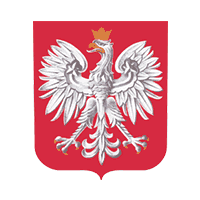Stanisław NAWRAT, Sebastian NAPIERAJ,Natalia SCHMIDT
Underground works using mining technology are associated with dangers to people present on the work site, the neighbouring environment and the facility being built.
During tunnelling using drilling and shot technology the working team is subjected to risk of high quantity of harmful dusts and gases. There is also a series of other risks during tunnelling such as natural, technological, heat and fire hazards. In order to ensure safety as well as hygiene conditions during the tunnelling stage, there is a need for proper ventilation of such facilities.
The main aim of ventilation of transport tunnel during the construction is to provide appropriate air exchange in order to keep the allowable levels of concentration of harmful solid and gas contaminants as well as in case guarantee safe evacuation of people in case of fire and putting it out. The proper ventilation using ventilation pipes in the tunnel being constructed enables the proper air exchange in order to maintain the acceptable levels of concentration of harmful contaminants as well as discharge of the contaminants generated by the vehicles installed in the tunnel and heat produced during shots. The correct ventilation of a tunnel excavation is good not only for work safety but also for work progress and costs.
This articles presents the selected problems associated with the ventilation methods of transport tunnels under construction.
Roman SĄSIADEK
The tests of combustion units show that the nitrogen oxide content in combustion gases during the operation of idle running engine up to 500 ppm. This condition is not abnormal because Polish Standard enables the value of 750 ppm NOx in such work conditions but if the methane content in atmosphere exceeds 1.0%, the allowable value is 1000 ppm NOx. Taking into account the harmful effect of nitrogen dioxide, it can be stated that the risk level for personnel present in the location of non combustion gases is unacceptable. An example of a risk is leaving idle running combustion engine devices at passenger or material stations which is particularly harmful to personnel in the area of the station or involved transport tasks. Due to the specific character of the work environment, the existing legal status in underground mining facilities enables higher concentration of nitrogen oxides than in the other industry branches which cannot be used as the reason for ignoring this risk. The character of occurrence of nitric oxide is usually temporary and closely associated with the shot operations being carried out, the transfer of combustion engine drive units and welding activities (very rarely). Nevertheless the emission sources are very efficient. The completed analysis of nitric oxide emissions sources shows that the following measures may be used to limit the risk: correct selection of ventilation parameters and monitoring of the air ingredients, maintaining good technical condition of combustion drives, using explosives with low content of harmful elements in shot gases, using welding materials with low content of harmful ingredients in welding fumes, oriented medical examinations and periodic check-ups of the personnel health and the inclusion of the risk from nitric oxides in training programs.
Adam KOWOL
The problem of modernization of machines and devices used in underground mining facilities is an inseparable element of product operation. Both Polish and EU legislation view this problem as particularly important, especially when they apply to machines and devices used in underground mining excavations with explosion risks. The evaluation of the regulations in force regarding machine and device safety – starting from general requirements included in the rules arising from Labour Code, through basic requirements arising from conformance assessment system act, and finally the rules arising from Geological And Mining Code shows that the modernization process shall respect technical requirements, correct for the product type. The industrial mining regulations concerning safety of machine and device operation and correlate with the regulations of Labour Code and conformance assessment rules, require the person implementing changes to products to use technical specifications which were used during design and introduced to use. The indispensable element of modernization is risk analysis and assessment carried out using the accepted technical rules dedicated to specific machine or device type. The product complexity level results in the need to fuse the technical specification of separate technical disciplines. The optimization of the selection of methods of risk analysis and evaluation, defining possible risks accompanying the machine and device modernization processes and correlation of the modernization process with technical requirements mean that every analysis and risk assessment is individual in character. The selection of method must include all risk types in the specific work location, at the same time keeping appropriateness of the method used for different types of the observed risk. The requirements for persons creating risk analysis and assessment come down to their level of competence viewed through the knowledge of: hazards, types of risk, methods of their creation, technologies used and work organization. The selection of the correct risk analysis and assessment method is the consequence of the actions of the person introducing the product for use after implementing changes which becomes the beneficiary of the results for the machine or device user.
Piotr HETMAŃCZYK
Demographic processes, occurring in Poland, will result a significant decrease number of working age people. These changes, if not accompanied by a significant increase in employment (especially those over 50 ), can quickly lead to a contraction in the number of people working and rapid growth in the number of different types social security benefits . This work indicates benefits of employing people over 50 and measures to increase employment in this age group



